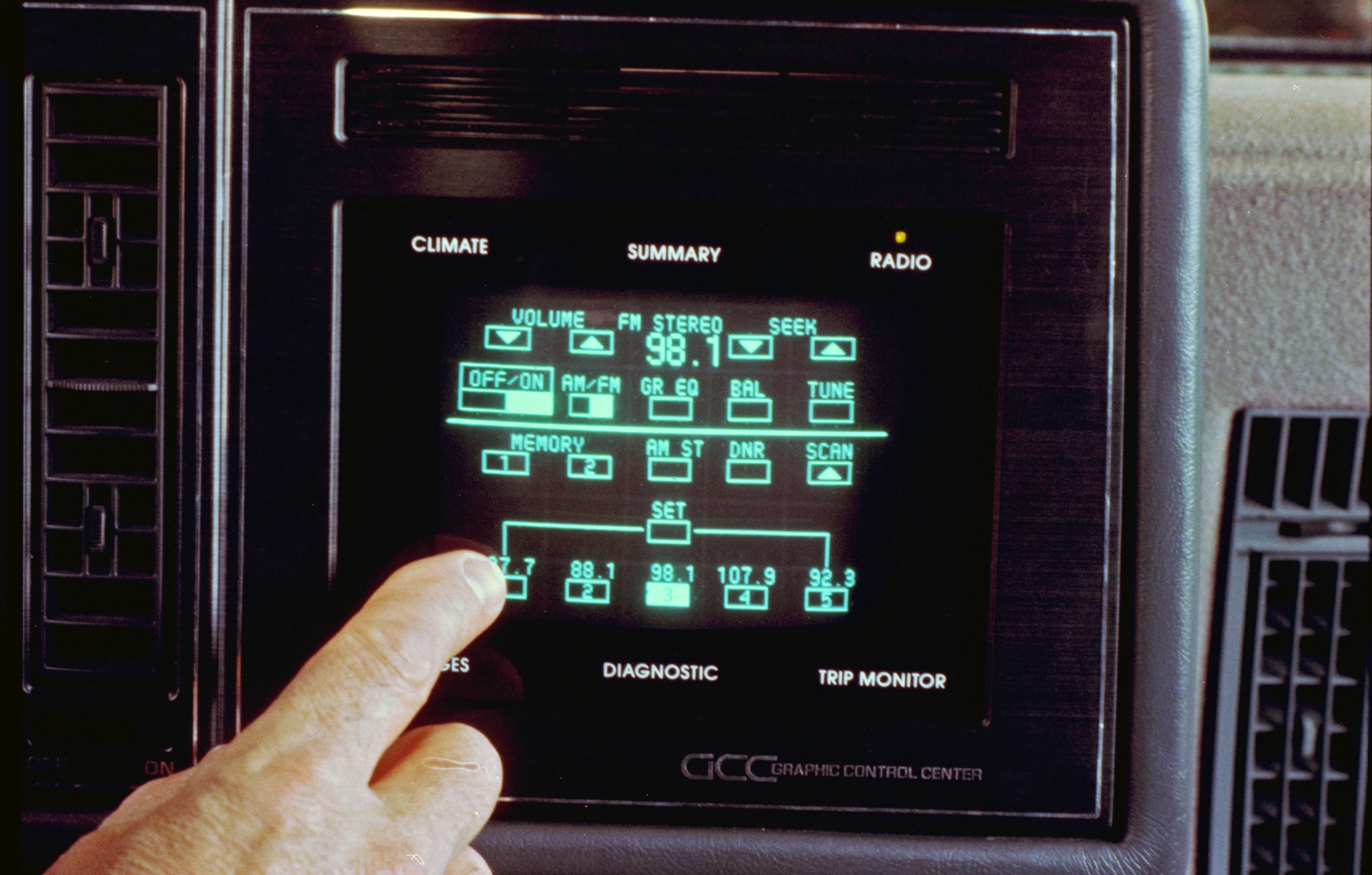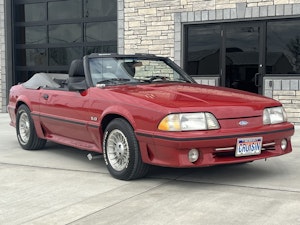Media | Articles
Infotainment systems? That’s so 1986
Touchscreens are so ubiquitous in daily life today it’s hard to imagine a time before them. They’ve replaced conventional controls on everything from cell phones, to refrigerators, to automobile center stacks. And while jabbing your finger at a car’s flat-screen seems like a modern pastime, the first car to use one arrived more than 30 years ago. Justifiably denounced for its small size and lackluster styling, the 1986 Buick Riviera pioneered the concept of the infotainment system, a development that evolved from car radios.
The AM car radio debuted in 1930 under the Motorola name, an aftermarket accessory produced by the Galvin Manufacturing Corporation. FM radios followed in 1953, the in-car record player flopped in 1956, 8-track tape players arrived in 1966, stereo radios in 1969, cassette tape decks in 1970, and compact disc players in 1984. Ultimately, these options would be killed by a confluence of technology: Bluetooth in 1998, the Apple iPod in 2001, the Apple iPhone in 2007, and the rise of Internet-based music streaming services such as Spotify and Pandora that proliferate today.
Car audio systems changed in concert with consumer preference. As touchscreens proliferated in the the early 2000s, Audi, BMW and Mercedes-Benz offered systems that managed audio, climate and other functions through a screen that was controlled by separate knobs. The touch-versus-controller scism continues today, further complicated by touchpads and gesture control.


The touchscreen’s origins date to its invention in 1965 by E.A. Johnson at the Royal Radar Establishment, in Malvern, UK. First deployed in the 1970s on air traffic control systems, it took years of corporate development before touchscreens reached the consumer market, the first being the Hewlett-Packard HP-150, a personal computer with a nine-inch Sony touch-sensitive cathode ray tube (CRT) screen. Operated by MS-DOS software, it retailed for $2,795, or $7,049 in today’s dollars. At that price, it clearly wasn’t a mainstream consumer purchase.
Marketplace
Buy and sell classics with confidence
All things considered, Buick’s first use of a touchscreen as standard equipment in the 1986 Riviera was a truly cutting edge achievement—especially considering it took up to five years to develop new models at that time.
In November 1980, Buick managers in Flint, Michigan wanted to produce a car with the industry’s most advanced electronics by the mid-1980s. A task force was formed to evaluate which electronic features then being developed could be offered. Meanwhile, at a Delco Systems facility in Santa Barbara, California, a touch-sensitive CRT was being independently developed to accommodate automotive use.
By early 1981, the experimental system was ready and shown to GM’s Product Policy Group, which approved the project. General Motors Chairman Roger B. Smith was enthusiastic, believing this was the sort of technology that GM needed to remain the world’s leading automaker. AC Spark Plug and Delco Electronics developed the hardware, while the Delco Systems Operation handled the software design. By 1983, the system specifications were set.


Buick installed the experimental CRT systems in a test fleet of 100 1984 Rivieras and gave them to key Buick dealers across the country to gain insight and assess customer reaction. A special electronic systems team formed to handle electrical issues that arose.
Dubbed the Graphic Control Center, the GCC was a CRT screen covered by an invisible Mylar switch panel that used transparent conductors that were row- and column-encoded to perform a specific function on a particular page. Each switch’s function changed with each page.
A CRT takes a few seconds to warm up before the display comes on. So engineers enabled the GCC’s circuitry to warm up when the driver’s door handle is touched. Once the door opens and closes, the display comes on, revealing the Riviera logo. If the screen isn’t touched within 30 seconds, it shuts off. If the ignition is switched on, the display goes to its home page, which handles 90 percent of a driver’s needs.
The system controls five areas: automatic climate control, AM/FM radio with optional graphic equalizer, trip calculations, gauges, and vehicle diagnostic information. Tap any section and the menus go deeper. For instance, touching the diagnostics page displays the status of the powertrain, electrical system, brakes and other vehicle data. With its black screen and green readout, the GCC seems like a relic now, but it was anything but that at the time.
Buick executives loved the new feature, including Cary Wilson, who first studied the idea in 1980.
“Right now, I think the system is expensive enough that it’s probably only going to be applicable on high-line cars,” he said at the time. “But I would like to see this system eventually find its way into the lower-price cars.”
Visionary? No doubt. Buick would install it in the 1988-89 Reatta as well. A modified version, the Visual Information Center, was used in the 1989-92 Oldsmobile Toronado before GM dropped system—a great idea that was ahead of the curve in terms of public acceptance. It would be another decade-and-a-half (or more) until any automaker came close to matching what Buick launched in 1986.
“I believe this system makes Buick a world leader,” Wilson said in 1986. “A new generation of automobile electrical systems is at hand, and Buick has set the stage.”
No doubt.










